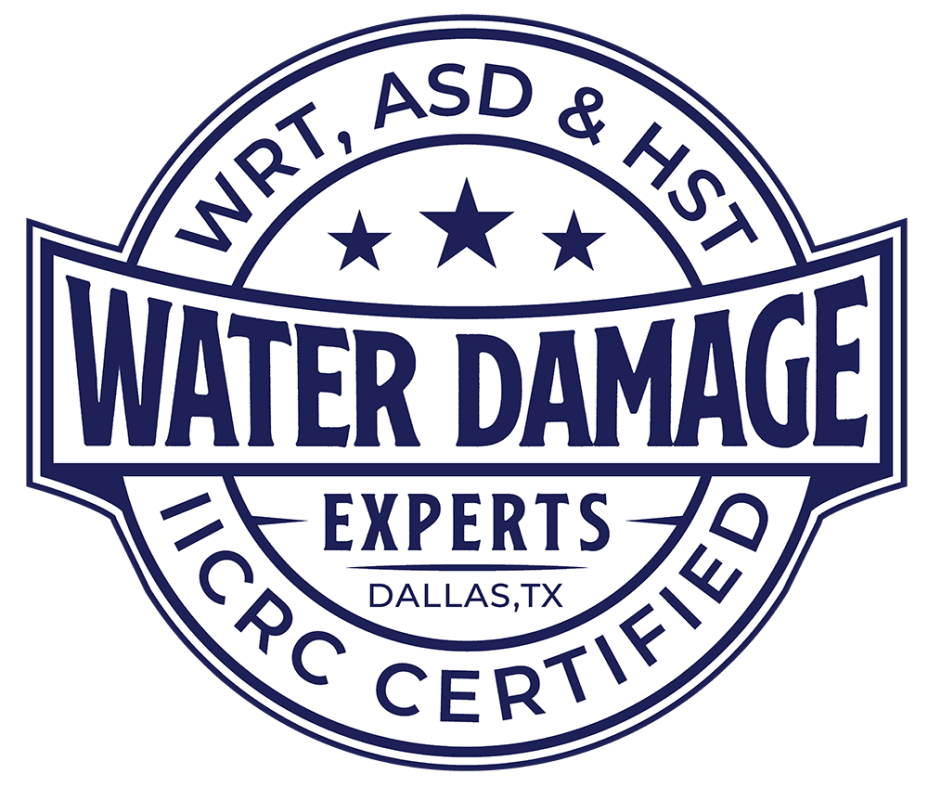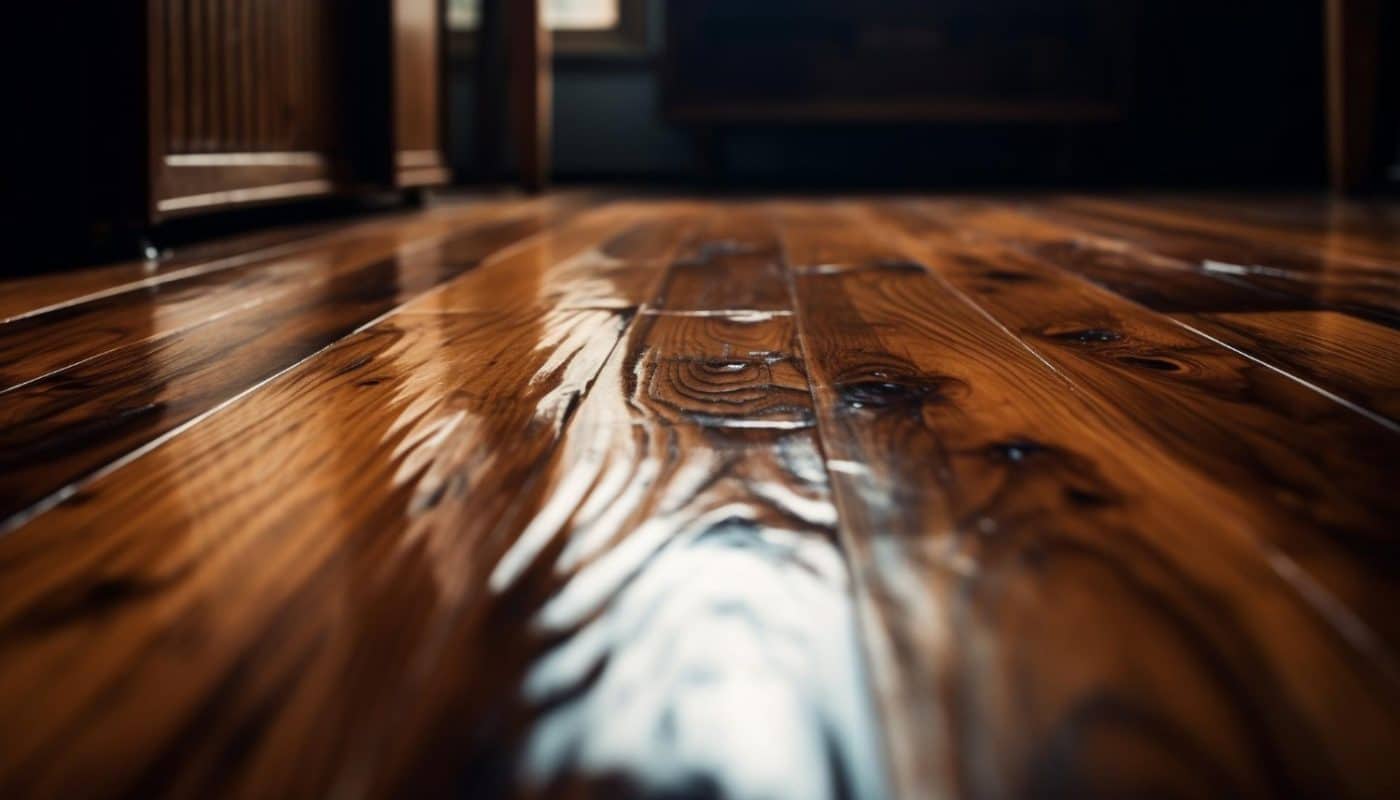Water seeping under hardwood floors can be a homeowner’s worst nightmare. The mystery behind this moisture intrusion can lead to costly repairs, structural damage, and the risk of mold growth. In this article, we will unveil the causes behind water under hardwood floors and explore effective solutions to prevent and address this issue.
One common cause of water infiltration is plumbing leaks. When pipes burst or develop small leaks within the walls or beneath the floors, water can seep into the porous wood, causing warping and discoloration. Another culprit could be excessive humidity levels, which allow moisture to accumulate and permeate the flooring. Additionally, natural disasters like floods or heavy rainfall can make their way through floorboards, leaving homeowners grappling with the aftermath.
Fortunately, understanding the factors contributing to water under hardwood floors can help homeowners take proactive steps to prevent future damage. From proper maintenance to identifying early warning signs, we will provide you with practical tips to safeguard your hardwood floors from moisture infiltration.
Join us as we unravel the mystery behind water under hardwood floors and equip you with the knowledge to protect your investment and preserve the beauty of your home.
The Dangers of Water Damage to Hardwood Floors
Water damage to hardwood floors can have severe consequences if not addressed promptly. The porous nature of wood makes it susceptible to moisture absorption, leading to warping, cupping, and discoloration. Over time, this can compromise the structural integrity of the floor, requiring extensive repairs or even replacement.
Additionally, water under hardwood floors creates an ideal environment for mold and mildew growth. Mold can spread quickly, causing health issues for occupants and further damaging the flooring and surrounding areas. The presence of mold can also decrease the indoor air quality, exacerbating respiratory problems and allergies.
To prevent these dangers and protect your investment, it is crucial to understand the signs of water damage under hardwood floors and take immediate action when necessary.
Signs of Water Damage Under Hardwood Floors
Detecting water damage under hardwood floors can be challenging, as the moisture is often concealed beneath the surface. However, there are several signs that may indicate the presence of water infiltration:
- Warped or Buckled Flooring: If your hardwood floor appears warped or buckled, it could be a clear sign of water damage. The moisture causes the wood to expand and distort, resulting in noticeable changes in the floor’s appearance.
- Discoloration or Staining: Dark spots or stains on the surface of the hardwood floor indicate the presence of water. These discolorations can be caused by prolonged exposure to moisture, leaving behind unsightly marks.
- Musty Odor: A persistent musty odor in a room with hardwood floors may indicate mold growth. Mold thrives in damp environments, and the smell of mold is often a telltale sign of hidden water damage.
- Squeaky or Loose Floorboards: Water damage can weaken the structure of the hardwood floor, causing the boards to become loose or develop squeaks. If you notice these signs, it’s essential to investigate further for any underlying water issues.
Being vigilant and proactive in identifying these signs can help you address water damage early on, minimizing the extent of the damage and associated repair costs.
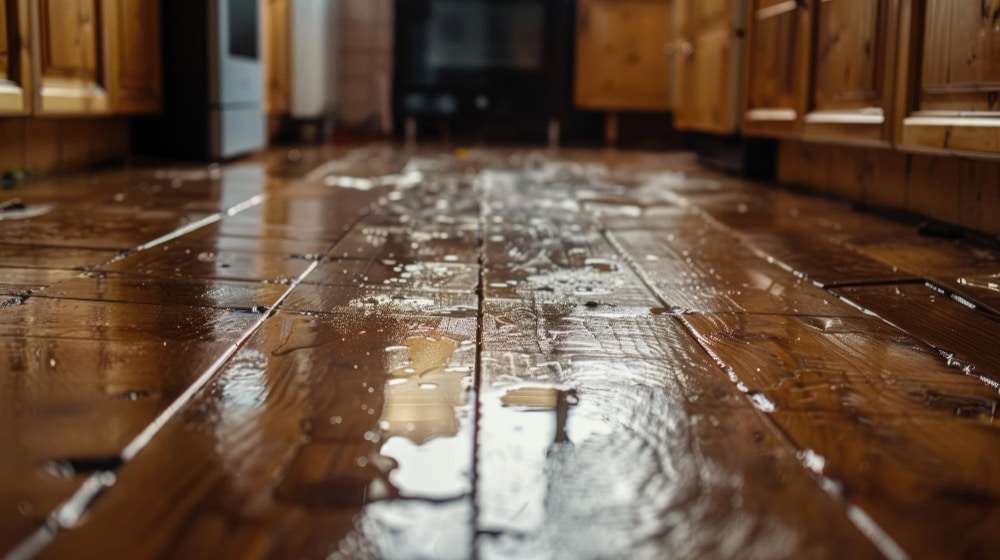
Common Causes of Water Seepage Under Hardwood Floors
Understanding the common causes of water seepage under hardwood floors is crucial for preventing future damage. Let’s explore some of the primary culprits:
- Plumbing Leaks: One of the most common causes of water infiltration is plumbing leaks. Burst pipes or small leaks within the walls or beneath the floors can allow water to seep into the porous wood, leading to significant damage over time. Regularly inspecting your plumbing system and addressing any leaks promptly is essential in preventing water damage to your hardwood floors.
- Excessive Humidity: High humidity levels can create a conducive environment for moisture accumulation and seepage under hardwood floors. When the air is saturated with moisture, it can penetrate the flooring, causing it to absorb water. Using dehumidifiers, ensuring proper ventilation, and maintaining optimal humidity levels in your home can help mitigate this risk.
- Natural Disasters: Unforeseen events like floods or heavy rainfall can cause water to seep through the floorboards, leaving homeowners grappling with the aftermath. While it may be challenging to prevent natural disasters, taking preventive measures such as installing flood barriers or ensuring proper drainage around your home can help minimize the impact of water intrusion.
By understanding these common causes, homeowners can take proactive steps to prevent water seepage under their hardwood floors. Regular maintenance, prompt repairs, and the implementation of preventive measures are key to safeguarding your investment and preserving the beauty of your home.
Preventing Water Damage to Hardwood Floors
Hardwood floors add warmth and beauty to any home, but they are not impervious to water damage. Taking preventive measures can go a long way in protecting your investment. Here are some steps you can take to prevent water damage to hardwood floors:
1. Regularly Inspect for Plumbing Leaks
Plumbing leaks can go unnoticed for extended periods, causing significant damage to your hardwood floors. Regularly inspect your plumbing system for leaks, especially in areas near hardwood flooring. Look for any signs of water stains, dampness, or musty odors. If you notice any of these signs, it’s crucial to address the issue promptly to prevent further damage.
2. Maintain Proper Humidity Levels
Excessive humidity can cause hardwood floors to absorb moisture, leading to warping and cupping. To maintain proper humidity levels, consider investing in a hygrometer to monitor the humidity in your home. Ideally, humidity should be kept between 35% and 55%. If the humidity goes above this range, use dehumidifiers to reduce moisture levels and prevent damage to your hardwood floors.
3. Use Mats and Rugs in High-Risk Areas
High-traffic areas, such as entryways and kitchens, are more prone to water spills and moisture. Place mats or rugs in these areas to provide an extra layer of protection for your hardwood floors. Make sure the mats are absorbent and regularly clean them to prevent any buildup of moisture.
4. Promptly Clean Up Spills
Accidents happen, and spills are inevitable. However, it’s crucial to clean up spills promptly to prevent water from seeping into your hardwood floors. Use a soft cloth or a mop to absorb the liquid, ensuring no moisture is left behind. Avoid using excessive water when cleaning your floors, as this can lead to water damage over time.
5. Regularly Maintain and Seal Your Hardwood Floors
Proper maintenance and regular sealing can act as a barrier against water infiltration. Follow the manufacturer’s guidelines for cleaning and maintaining your hardwood floors. Additionally, periodic sealing can help protect your floors from water damage and extend their lifespan. Consult with flooring professionals to determine the appropriate sealant for your specific type of hardwood flooring.
By implementing these preventive measures, you can significantly reduce the risk of water damage to your hardwood floors and preserve their beauty and longevity. However, if water still manages to seep under your hardwood floors, it’s essential to take immediate action.
Steps to Take When Water is Detected Under Hardwood Floors
Detecting water under hardwood floors can be challenging, as the signs may not always be visible. However, there are several steps you can take if you suspect moisture intrusion:
1. Assess the Extent of the Damage
Before taking any action, assess the extent of the water damage. Look for visible signs like discoloration, cupping, or warping of the floorboards. If the damage is extensive or you suspect mold growth, it’s crucial to contact a professional water damage restoration company to evaluate and mitigate the situation.
2. Remove Standing Water
If there is standing water on your hardwood floors, it’s essential to remove it promptly. Use a wet/dry vacuum or a mop to absorb as much water as possible. Be careful not to oversaturate the floors or use excessive force, as this can further damage the wood.
3. Increase Air Circulation and Ventilation
Proper air circulation and ventilation can help dry out the moisture trapped under your hardwood floors. Open windows and doors to increase airflow, and use fans or dehumidifiers to expedite the drying process. Avoid using heaters or direct sunlight, as rapid drying can cause the wood to warp or crack.
4. Monitor the Moisture Levels
Regularly monitor the moisture levels in the affected area. You can use a moisture meter to determine the moisture content of the wood. Aim for a moisture level below 12% before considering any repairs or refinishing. If the moisture levels remain high, it’s advisable to consult a professional to assess the situation and provide appropriate solutions.
5. Consult with Professionals
In cases of extensive water damage, it’s essential to consult with professionals who specialize in water damage restoration. They have the expertise, equipment, and knowledge to assess the situation accurately and provide effective solutions. Professional restoration can help mitigate further damage, prevent mold growth, and restore your hardwood floors to their original condition.
By taking these steps when water is detected under your hardwood floors, you can minimize the potential damage and increase the chances of salvaging your flooring.
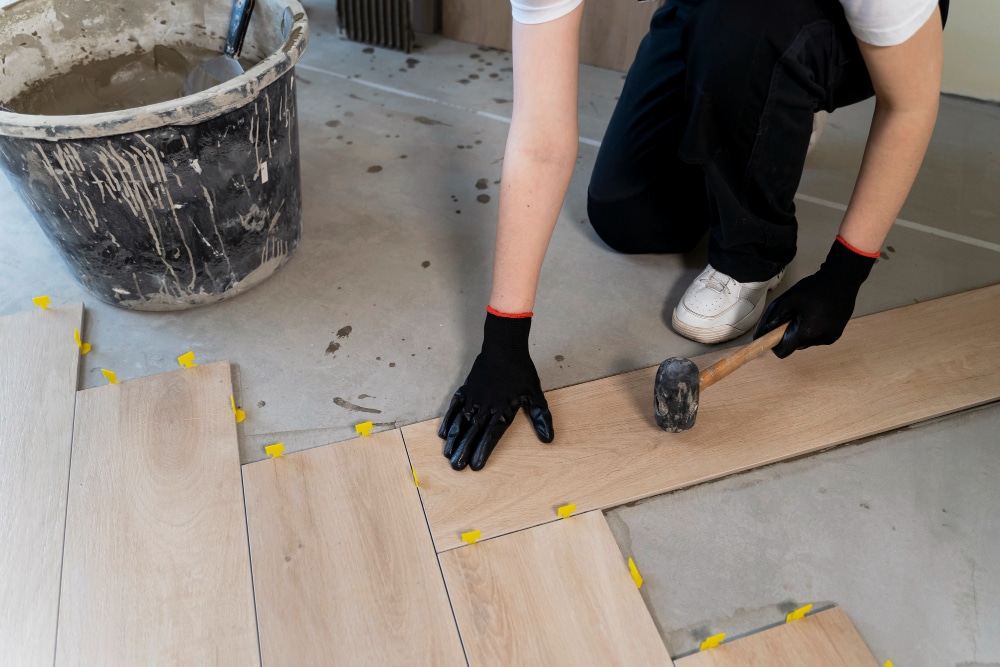
Professional Solutions for Water Damage Restoration
In some instances, water damage to hardwood floors may require professional intervention. Here are some professional solutions that can help restore your hardwood floors:
1. Water Extraction
Professional water damage restoration companies have specialized equipment, such as powerful pumps and vacuums, to extract water from your hardwood floors effectively. They can remove standing water and moisture trapped within the wood, preventing further damage and potential mold growth.
2. Drying and Dehumidification
After water extraction, professionals use industrial-grade dehumidifiers and high-speed air movers to dry out the affected area. These equipment help eliminate excess moisture and prevent further damage to your hardwood floors. They carefully monitor the drying process to ensure it is thorough and effective.
3. Moisture Detection and Monitoring
Water damage restoration professionals use advanced moisture detection tools, such as moisture meters and thermal imaging cameras, to identify hidden moisture pockets within the flooring. By pinpointing these areas, they can take targeted measures to restore the affected wood and prevent any future problems.
4. Mold Remediation
If water damage has led to mold growth, professional restoration companies can provide mold remediation services. They safely remove mold and treat affected areas to prevent its regrowth. Mold remediation is crucial to protect your health and ensure a safe living environment.
5. Floor Restoration and Repair
Once the moisture has been eliminated, professionals can assess the condition of your hardwood floors and provide necessary repairs. They can replace damaged boards, sand and refinish the floors, and restore them to their original beauty. Professional restoration ensures a thorough and effective repair process, leaving your hardwood floors looking as good as new.
When faced with extensive water damage to your hardwood floors, it’s essential to seek professional help to ensure a comprehensive restoration process and prevent any further issues.
DIY Methods for Drying Out Hardwood Floors
Experiencing water under hardwood floors can be distressing, but there are several DIY methods you can employ to dry out your flooring before any further damage occurs.
1. Remove Standing Water
The first step is to remove any standing water on your hardwood floors. Use a wet vacuum or a mop to soak up as much water as possible. Be sure to wring out the mop or empty the vacuum regularly to prevent the spread of water to other areas.
2. Use Fans and Dehumidifiers
After removing the standing water, it’s crucial to dry out the affected area as quickly as possible. Place fans strategically around the room to increase air circulation and promote evaporation. Additionally, using a dehumidifier can help reduce the moisture content in the air, aiding in the drying process.
3. Elevate Furniture and Rugs
To prevent further damage to your hardwood floors, elevate any furniture or rugs that may be in contact with the wet flooring. This will allow air to circulate underneath and aid in the drying process.
Remember, these DIY methods are effective for minor water damage. If the water under your hardwood floors is extensive or if you suspect structural damage, it’s best to consult with a professional to assess the situation.
Repairing and Restoring Water-Damaged Hardwood Floors
When water seeps under hardwood floors, it can cause significant damage, requiring repairs and restoration to bring your flooring back to its original condition. Here are some steps to consider:
1. Assess the Extent of the Damage
Before starting any repairs, it’s essential to assess the extent of the damage. Inspect the affected area thoroughly, looking for signs of warping, discoloration, or mold growth. Take note of any loose or damaged floorboards that may need to be replaced.
2. Dry the Floors Thoroughly
To prevent further damage and mold growth, it’s crucial to dry the floors thoroughly. Utilize the DIY methods mentioned earlier, such as removing standing water, using fans, and dehumidifiers. Allow the floors to dry completely before proceeding with any repairs.
3. Replace Damaged Floorboards
If there are floorboards that have been irreversibly damaged, it’s necessary to replace them. Carefully remove the damaged boards using a pry bar, taking care not to damage the surrounding flooring. Install new boards, ensuring a proper fit and alignment with the existing floor.
4. Sand and Refinish the Floors
After replacing any damaged floorboards, it’s time to sand and refinish the floors to restore their appearance. Start by sanding the entire floor to even out any imperfections and remove any remaining stains or discoloration. Once sanded, apply a sealant or finish of your choice to protect the wood and enhance its natural beauty.
Remember, if the damage is extensive or if you’re unsure of the repair process, it’s always best to consult with a professional hardwood flooring contractor. They have the expertise and tools to ensure the repairs are done correctly and efficiently.
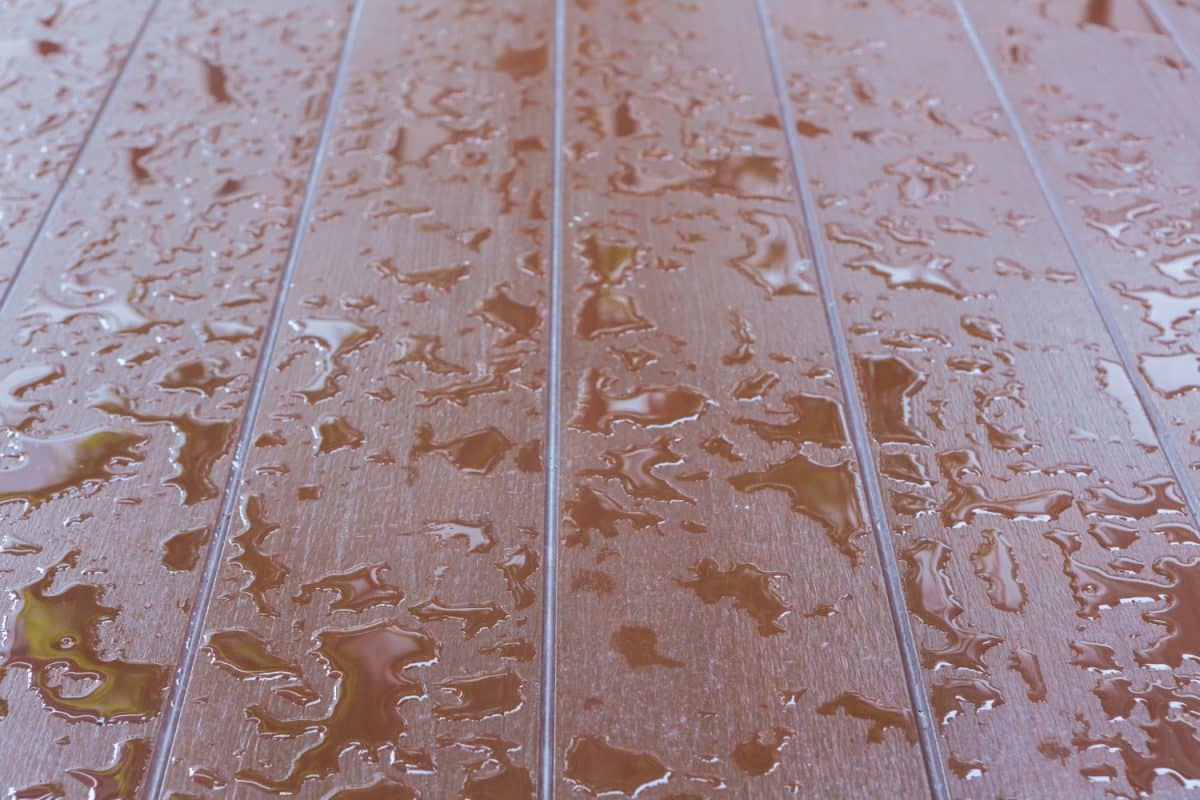
Conclusion: Importance of Addressing Water Seepage Promptly
Water seeping under hardwood floors can cause significant damage if not addressed promptly. It’s crucial to understand the causes behind this issue and take proactive steps to prevent and mitigate the damage. By employing DIY methods for drying out hardwood floors and following proper repair and restoration procedures, you can safeguard your investment and preserve the beauty of your home.
Remember, prevention is key. Regularly inspect your plumbing system, monitor humidity levels, and address any signs of water damage promptly. By staying vigilant and taking immediate action, you can protect your hardwood floors from the perils of moisture infiltration.
So, don’t let the mystery of water under hardwood floors haunt you any longer. Arm yourself with knowledge, be proactive, and ensure the longevity and beauty of your hardwood flooring for years to come.
